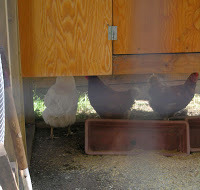Mary Soderstrom's Blog, page 112
July 9, 2012
O Povo Formidável: The Portuguese Continue to Make Waves
 Two very interesting things coming out of the Portuguese connection. The first is the Portuguese Sundays being held on Montreal's St. Lawrence Main for several Sunday this summer. Music, dance, poetry: should like a lovely way to spend the end of a summer afternoon. I didn't make yesteday's which was the first, but I certainly will try to get there in the future.
Two very interesting things coming out of the Portuguese connection. The first is the Portuguese Sundays being held on Montreal's St. Lawrence Main for several Sunday this summer. Music, dance, poetry: should like a lovely way to spend the end of a summer afternoon. I didn't make yesteday's which was the first, but I certainly will try to get there in the future. The second is not new, apparently. According to YouTube it was first posted 8 or 10 months ago, when all financial eyes were turned toward Portugal and its debt. The video--which would appear to have been aimed at an upscale, foreign audience--demonstrates the creativity and strength of character that I admire in the Portuguese and the Lusophone world in general. They are formidável!
Published on July 09, 2012 06:43
July 7, 2012
Saturday Photo: The Loveliest Flowers in the World
 Just got back from delivering Jeanne and Elin home after a shower for Sophie and baby Thomas (not to mention Lukas.)
Just got back from delivering Jeanne and Elin home after a shower for Sophie and baby Thomas (not to mention Lukas.) It was delightful to see how Sophie's friends wanted to help out with a party and material aids. Also nice to realize that a good portion of the gifts were recyled or re-purposed. Foir example, one was a booster chair that had been passed on to a young woman without kids, who thought Sophie might like it. Since Thomas is not due before early September, several months will elapse before he's ready to use anything like it, but one of Sophie's friends has a 20 month old girl who can use it right now. So an exchange was made on the spot, and the Parent Underground continues.
Needless to say, Jeanne had great fun with all the attebtion. Among the guests were two very small babies (two weeks and three months) whose mothers allowed Jeanne to kiss. Grandmaman Andrée and Grandpapa Marc (Sophie's parents) were also patiently indulgent with their future grandson's cousin.
Then I took them home to be greeted by the gernaiums that Elin and Emmanuel's landlords display so warmly on the front steps. They are Italian, and I grew up in California, and the love of these brilliant flowers from South Africa unites us.
Published on July 07, 2012 17:51
July 6, 2012
Ying Jia:" Success" of a Chinese Couple As Owners of a Depanneur
 Great reportage on the life of a corner store owner in Quebec, done by the National Film Board and
Le Devoir.
Check it out: part in English, mostly in French, but its a story about the immigrant experience tht goes beyond language.
Great reportage on the life of a corner store owner in Quebec, done by the National Film Board and
Le Devoir.
Check it out: part in English, mostly in French, but its a story about the immigrant experience tht goes beyond language.
Published on July 06, 2012 08:05
July 5, 2012
Words of Wisdom? I Think Not
 Somebody posted a variation of this on Facebook recently, and I'm back to musing about just how destructive this bit of "wisdom" is.
Somebody posted a variation of this on Facebook recently, and I'm back to musing about just how destructive this bit of "wisdom" is. I have always thought Yoda is saying here that unless you are sure to succeed, don't bother to try. That, I am absolutely sure, is very bad advice. Failing is not a bad thing, if you learn something from it. The trick is not to give up.
Our Lukas says the quote means that you must put everything you have into your efforts so you won't be doing a simple, wishy-washy "try." I've got no problem with all-out effort (most of the time, there is a great deal to be said about choosing your battles) but I would hate to think that George Lucas was counselling the safe way--only undertaking battles that you know you'll win.
Published on July 05, 2012 11:34
July 4, 2012
Happy Fourth of July in a New Era: Even the DAR Has Changed
The face of the United States is changing, no one can deny that. Recent census figures show that more than half the babies born in the US are non-Hispanic whites, a situation which is going to much impact on the country's future.
But things are also changing within some institutions that have been around for a long while, that, indeed, go back to the founding of the country. The Daughters of the American Revolution (DAR) has just inaugarated a new chapter where the majority of members of non-white.
That's an enormous change from 1939 when the DAR barred contralto Marian Anderson from appearing in Constitution Hall. The veto prompted the First Lady of the time, Eleanor Roosevelt, to resign. In response Ms. Anderson gave a grand concert at the Lincoln Memorial
But things are also changing within some institutions that have been around for a long while, that, indeed, go back to the founding of the country. The Daughters of the American Revolution (DAR) has just inaugarated a new chapter where the majority of members of non-white.
That's an enormous change from 1939 when the DAR barred contralto Marian Anderson from appearing in Constitution Hall. The veto prompted the First Lady of the time, Eleanor Roosevelt, to resign. In response Ms. Anderson gave a grand concert at the Lincoln Memorial
Published on July 04, 2012 07:38
July 3, 2012
Want to Know What I Think I Do for Living? Canada Writes Asks Me Some Questions
Earlier this year I spent a slew of evenings reading entries in the Canada Writes non-fiction competition. Very interesting, with some sterling entries in the lot I was given. (There were ten of us in the first round of reading, with a hand off to a smaller group who will pick the winners.)
So if you want to know more about me and Canada Writes, check this out.
So if you want to know more about me and Canada Writes, check this out.
Published on July 03, 2012 13:44
Ten Days of Patriot Love: June 24 to July 1
Like to see anybody in the US of A take on "Oh Say Can You See" in the same spirit
And if you're feeling beaten by the heat, here's the Quebec "hymne nationale," mon pays, ce n'est pays, c'est l'hiver" (my country isn't a country, it's the winter."

And if you're feeling beaten by the heat, here's the Quebec "hymne nationale," mon pays, ce n'est pays, c'est l'hiver" (my country isn't a country, it's the winter."
Published on July 03, 2012 13:37
July 2, 2012
M. Aimé Lafleur and His Hens: an Adventure in Urban Agriculture
Jeanne and I have checked out an urban henhouse the last couple of Saturdays, and today I went by to take a few pictures. It's in the heart of Piccola Italia, or Little Italy. right next to a community center that was formerly a church. She's been somewhat interested in the birds, although the swings and slides in the nearby playground have been more of an attraction.

But I wanted to learn more, and luckily I met the man in charge, Monsieur Aimé Lafleur (not his real name, but a nom de poulailler that means something like "Likes Flowers") He tends to the three Chantecler hens (a white heritage breed developed in Quebec) and two red-brown ones whose breed I don't know.
The birds are a great way to show neighborhood children where their food comes from, and indeed they get to help take care of them. M. Lafleur does the cleaning, feeding, watering and tending three times a day, but the kids, including some little ones from the day care centre next door, take a lot of responsiblity.
The project is in its fourth year: the hen house is constructed snugly enough that the Chanteclers can stay there until temperatures reach near the place where Fahrenheit and Celsuis come together, around minus 20. To be on the safe side, though, the hens spend part of the winter in the barn of a retired farmer outside Montreal.
 M. Lafleur also runs two community gardens and a project which collects left over food once a week from the Jean Talon Market, just a few blocks away. The idea is to improve available food and eating habits for the folks in the neighborhood.
M. Lafleur also runs two community gardens and a project which collects left over food once a week from the Jean Talon Market, just a few blocks away. The idea is to improve available food and eating habits for the folks in the neighborhood.
There will be an open house for neighborhood kids in the next few weeks: "Bring your granddaughter over," he told me.
Sure will...


But I wanted to learn more, and luckily I met the man in charge, Monsieur Aimé Lafleur (not his real name, but a nom de poulailler that means something like "Likes Flowers") He tends to the three Chantecler hens (a white heritage breed developed in Quebec) and two red-brown ones whose breed I don't know.
The birds are a great way to show neighborhood children where their food comes from, and indeed they get to help take care of them. M. Lafleur does the cleaning, feeding, watering and tending three times a day, but the kids, including some little ones from the day care centre next door, take a lot of responsiblity.

The project is in its fourth year: the hen house is constructed snugly enough that the Chanteclers can stay there until temperatures reach near the place where Fahrenheit and Celsuis come together, around minus 20. To be on the safe side, though, the hens spend part of the winter in the barn of a retired farmer outside Montreal.
 M. Lafleur also runs two community gardens and a project which collects left over food once a week from the Jean Talon Market, just a few blocks away. The idea is to improve available food and eating habits for the folks in the neighborhood.
M. Lafleur also runs two community gardens and a project which collects left over food once a week from the Jean Talon Market, just a few blocks away. The idea is to improve available food and eating habits for the folks in the neighborhood.There will be an open house for neighborhood kids in the next few weeks: "Bring your granddaughter over," he told me.
Sure will...
Published on July 02, 2012 11:13
June 30, 2012
Saturday Photo: When You Haven't Got Much Garden Room, Go Up!
 In this neighborhood of tiny front gardens, people have a way of making every little bit of space count. Here one of my neighbors has a f\vine and a climbing rose working their way up one of the street trees.
In this neighborhood of tiny front gardens, people have a way of making every little bit of space count. Here one of my neighbors has a f\vine and a climbing rose working their way up one of the street trees.
Published on June 30, 2012 10:23
June 29, 2012
Appropriation of Voice: Back to That Old Question
There are now 10 stories more or less written for the short story collection I've been working on for the last year, and for which I got that nice CALQ grant. Called
Desire Lines: A Geography of Love
, it is designed to explore the various kinds of love we feel, between lovers, between parents and children, between friends. Only a couple of the stories are ready for publication, but I'm more or less satistifed with the contours of the collection. That's good because I'm supposed to make a report on what I've accomplished with the grant money in a short time.
Because I want to cover a lot of human experience, I've consciously varied the point of view, but yesterday I began wondering if I had given to much of the spotlight to the female one. So I counted: five are exclusively female, two are split between men and women and three are male.
Hmm. Is that good enough? Or is it really possible for a woman to put herself in the skin of a man? Certainly I've tried before with (I think) some success, but echoes of that controversy from the 1990s are bouncing around me. At that point there were nearly physically violent clashes over whether men could write in the voice of a woman, and if a member of one ethnic group had a right to take write from the point of view of another group. The Writers' Union of Canada had several stormy sessions over the issue, while in the US and elsewhere, it was argued that white men couldn't understand and therefore couldn't write about the experience of "others."
The last book we discussed at the Atwater Library Book Group was The Memoirs of Hadrian by Marguerite Yourcenar. The French writer successfully (in most readers' eyes) gives us the story of the Roman emperor told in the first person. The Atwater group found the book rewarding for the most part, and several said they had trouble believing that it was fiction by a 20th century woman. "How can this happen?" at least two people asked.
Well, the answer is: anything can happen if the writer is good enough. Obviously Yourcenar was. The question for me now is: how good is Mary Soderstrom?
Because I want to cover a lot of human experience, I've consciously varied the point of view, but yesterday I began wondering if I had given to much of the spotlight to the female one. So I counted: five are exclusively female, two are split between men and women and three are male.
Hmm. Is that good enough? Or is it really possible for a woman to put herself in the skin of a man? Certainly I've tried before with (I think) some success, but echoes of that controversy from the 1990s are bouncing around me. At that point there were nearly physically violent clashes over whether men could write in the voice of a woman, and if a member of one ethnic group had a right to take write from the point of view of another group. The Writers' Union of Canada had several stormy sessions over the issue, while in the US and elsewhere, it was argued that white men couldn't understand and therefore couldn't write about the experience of "others."
The last book we discussed at the Atwater Library Book Group was The Memoirs of Hadrian by Marguerite Yourcenar. The French writer successfully (in most readers' eyes) gives us the story of the Roman emperor told in the first person. The Atwater group found the book rewarding for the most part, and several said they had trouble believing that it was fiction by a 20th century woman. "How can this happen?" at least two people asked.
Well, the answer is: anything can happen if the writer is good enough. Obviously Yourcenar was. The question for me now is: how good is Mary Soderstrom?
Published on June 29, 2012 08:41



